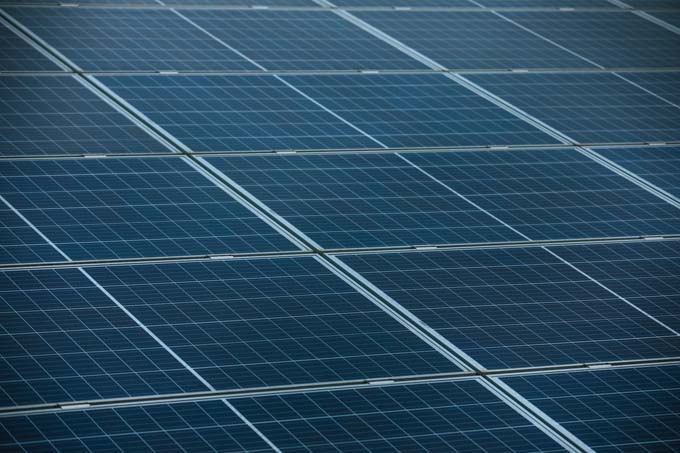Cheaper solar cell production thanks to copper instead of silver
Photovoltaics is the mainstay of the desired energy turnaround. Ongoing developments and research activities are continuously leading to improvements in the efficiency and production technologies of photovoltaic modules. Solar cells are therefore increasingly becoming a mass product. The state of the art today are the so-called heterojunction solar cells, which get by with a comparatively low use of the semiconductor metal silicon and thus have a low CO2 footprint [...]

Photovoltaics is the mainstay of the desired energy turnaround. Ongoing developments and research activities are continuously leading to improvements in the efficiency and production technologies of photovoltaic modules. Solar cells are therefore increasingly becoming a mass product. The state of the art today are the so-called heterojunction solar cells, which manage with a comparatively low use of the semiconductor metal silicon and thus have a low CO2 footprint. In addition, they achieve the highest efficiencies in industrial solar cell production.
However, silver is still used in solar cell production. This precious metal is responsible for conducting the electricity generated in the silicon layer. Recently, however, the price of silver has risen massively; silver now accounts for around ten percent of the manufacturing costs of a PV module. In addition, supplies of this precious metal are very limited. The solar industry alone already processes 15 percent of the silver mined worldwide - and the trend is rising. And let's not forget other sectors, such as electromobility, which also have an ever-increasing demand for this metal.
Copper for solar cell contacts
So can silver be replaced by another material of equal value? And if so, what impact will this have on solar cell production processes? Researchers at the Fraunhofer Institute for Solar Energy Systems ISE in Freiburg i. Br. have addressed these questions. A research team led by Dr. Markus Glatthaar has developed an electroplating process to replace silver with copper for the promising heterojunction technology. Copper is many times cheaper and more readily available than silver.
Anyone involved in electroplating knows that surfaces which are not to be plated must first be masked with a non-conductive layer. The copper then builds up in the electrolyte bath only in those areas that are not coated with this insulation. Until now, expensive polymer-based coatings or laminated foils have been used for this insulating layer. Their disposal is time-consuming and costly. However, Dr. Markus Glatthaar's team has now succeeded in replacing the polymers with aluminum. Just like copper, aluminum is fully recyclable. The double material change, from silver to copper and from polymer to aluminum, also brings a double benefit: Solar cell production not only becomes more sustainable, but also significantly cheaper.
Innovative electroplating technology and improved electrolytes
The special electroplating process now makes it possible to replace silver with copper. According to the researchers, it was even possible to improve the conductivity of the so-called busbars, i.e. the link between the individual solar cells. Due to the laser structuring used, the copper lines are particularly narrow. Due to the extremely narrow width of the copper line of only 19 μm (micrometers), the light-absorbing silicon layer experiences less shadowing than with the silver lines. This and the high conductivity of the electrodeposited copper improve the current yield.
But aluminum as a masking layer? Isn't aluminum also conductive? At first glance, this metal does indeed seem unsuitable as a mask. However, aluminium has the property that it oxidizes quickly and forms an oxide layer a few nanometres thick, which acts as an insulator. "We were able to adjust the process parameters and develop a special type of electrolyte that ensures that the extremely thin, native oxide layer of aluminum can reliably fulfill its insulating function. This was an important milestone for the success of our research project," says a delighted Dr. Glatthaar.
Push for cheaper solar cell production
The researchers are convinced that both copper and aluminum, as recyclable materials, can bring photovoltaic production a good deal closer to the circular economy and improve environmental and social standards in the process. As a next step, a spin-off was founded by Fraunhofer ISE, which plans to create a pilot production plant together with industrial partners at the beginning of 2023.
Substituting silver with copper could give a further boost to solar cell production. This is because copper is more readily available than silver and has shorter supply chains. In addition, the price of copper is currently less dependent on international commodity markets. The price of a tonne of copper averaged 7545 dollars in July 2022. In comparison: in May 2021, more than 10,000 dollars had to be paid per tonne of copper.
Sources: Techexplore.com / Fraunhofer ISE
This article originally appeared on m-q.ch - https://www.m-q.ch/de/guenstigere-solarzellenproduktion-dank-kupfer-statt-silber/









